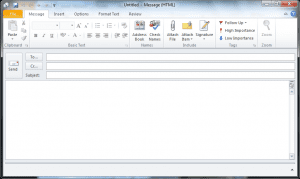The following are some of the legislations that relate to use of emails.
- Electronic Communications and Transactions Act, 2002
The overall objective of the Act is to enable and facilitate electronic transactions by creating legal certainty around transactions and communications conducted electronically. The Act seeks to address the following policy imperatives:
- bridging the digital divide by developing a national e-strategy for South Africa;
- ensuring legal recognition and functional equivalence between electronic and paper-based transactions;
- promoting public confidence and trust in electronic transactions; and
- providing supervision of certain service providers
- A) Facilitating electronic transactions
Part 1 provides for the legal recognition of data messages and records. Electronic data will, subject to certain conditions, be permitted to be retained for statutory record retention purposes, will be regarded as being ‘‘in writing’’, and as a true copy of an ‘‘original’’ record, and provision is made for securing proper evidentiary weight of electronic evidence.
Part 2 deals with the rights and obligations that follow from the communication of data messages. The Act also provides for the validity of sending notices and other expressions of intent through data messages.
- B) Cyber inspectors
Chapter XII of the Act seeks to provide for the Department of Communications to appoint cyber inspectors. The cyber inspectors may monitor Internet web sites in the public domain and are granted powers of search and seizure of “information systems”, subject to obtaining a warrant. The Act’s definition of ‘‘information system’’ means a system for generating, sending, receiving, storing, displaying or otherwise processing data messages and includes the Internet;
Under Section 82 (1) A cyber inspector may, in the performance of his or her functions, at any reasonable time, without prior notice and on the authority of a warrant issued in terms of section 83(1), enter any premises or access an information system that has a bearing on an investigation
[Amongst other things] He is authorised to:
- Search those premises or that information system;
- Search any person on those premises if there are reasonable grounds for believing that the person has personal possession of an article, document or record that has a bearing on the investigation;
- Take extracts from, or make copies of any book, document or record that is on or in the premises or in the information system and that has a bearing on the investigation;
- Demand the production of and inspect relevant licenses and registration certificates as provided for in any law;
- Inspect any facilities on the premises which are linked or associated with the information system and which have a bearing on the investigation;
A person who refuses to co-operate or hinders a person conducting a lawful search and seizure in terms of this section is guilty of an offence.
- C) Unsolicited goods, services or communications
Unsolicited emails now have a legal definition and must meet certain requirements.
45(1): Any person who sends unsolicited commercial communications to consumers, must provide the consumer
(a) With the option to cancel his or her subscription to the mailing list of that person; and
(b) With the identifying particulars of the source from which that person obtained the consumer’s personal information, on request of the consumer.
(2) No agreement is concluded where a consumer has failed to respond to an unsolicited communication.
(3) Any person who fails to comply with or contravenes subsection (1) is guilty of an offence and liable, on conviction, to the penalties prescribed in section 89(1).
(4) Any person who sends unsolicited commercial communications to a person, who has advised the sender that such communications are unwelcome, is guilty of an offence and liable, on conviction, to the penalties prescribed in section 89(1).
In responding to local spam you might find the following template message most useful in getting results.
- D) Sending and receiving emails
The Act sets out rules to provide certainty about:
- when an electronic communication, such as an email or fax, is taken to have been sent and received, and
- where electronic communications are taken to have been sent and received
An email or other electronic communication is taken to have been sent at the time it first enters an information system outside the sender’s control. So if you have an email account with an Internet Service Provider (ISP), your email will be taken to have been sent when it first enters your ISP’s system. If you have a direct Internet connection, the email will be taken to have been sent when it first goes to the recipient’s ISP or their own mail server. An email or other electronic communication is taken to have been received:
- if the receiver has designated an information system for receiving emails, when the email first enters that information system, or
- in all other situations, when the email comes to the receiver’s attention
- E) Information that must be in paper-based writing
Some communications or transactions that the law requires to be in writing cannot be in electronic form: they must still be on paper. For example:
- notices that are required to be given to the public
- information that is required to be given in writing either in person or by registered post
- wills, affidavits and powers of attorney
- cheques and other negotiable instruments, and bills of lading
- court documents
- documents to do with title to land
- various agreements or notices that are required to be in writing by consumer-protection laws, for example:
-
- the “prepossession notice” that a finance company is required to give before it repossesses hire-purchase goods
- the written agreement that a door-to-door salesperson is required to give
- consent by a psychiatric patient to brain surgery
- search warrants
